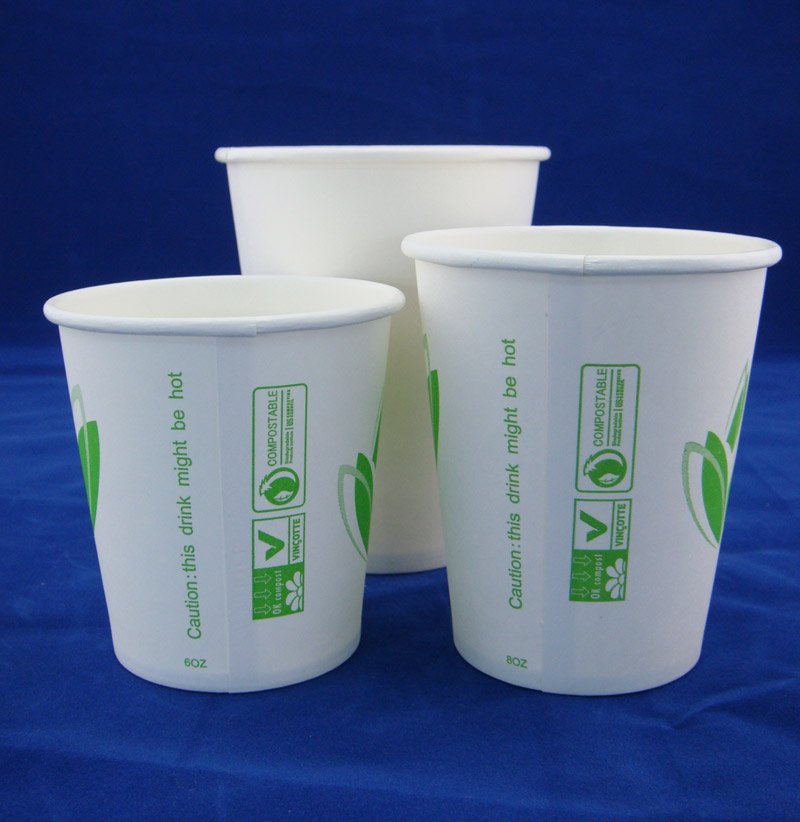Introduction
The global food and beverage industry is in the midst of a packaging revolution. While the shift away from single-use plastics is gaining momentum, gobelets en papier have become one of the most widely adopted alternatives. At first glance, they appear to be a greener choice—but the truth is more nuanced. This article explores the environmental impact, performance, and future of paper cups, with a focus on sustainable innovations that truly make a difference.
What Is a Paper Cup?
A gobelet en papier is a disposable container used primarily for serving hot or cold beverages. It is typically made from food-grade paperboard and coated with a thin layer of plastic or biofilm to prevent leakage. These cups are commonly found in coffee shops, restaurants, offices, and events. While widely used, the environmental footprint of paper cups depends heavily on their material composition and end-of-life treatment.

The Problem with Conventional Paper Cups
Despite being called “paper” cups, many conventional models include a polyethylene (PE) lining on the inner surface. This lining, though essential for liquid resistance, poses significant environmental challenges:
- Non-Biodegradable Core: The plastic lining makes it difficult for paper cups to biodegrade in natural conditions.
- Recycling Challenges: Most recycling facilities cannot separate the plastic lining from the paper, rendering the cup non-recyclable.
- Misleading Perception: Many consumers believe all paper cups are eco-friendly, when in fact most contribute to landfill waste.
Enter Truly Sustainable Paper Cups
To address these issues, manufacturers like Bioleaderpack have introduced eco-friendly paper cups that are:
1. Plastic-Free or PLA-Coated
- PLA (Polylactic Acid) is a plant-based biopolymer that replaces fossil-fuel plastics. PLA-lined cups sont industrially compostable and reduce dependence on petroleum.
- Some paper cups are now made entirely plastic-free, featuring aqueous dispersion coatings ou mineral-based barriers, which allow for easier recycling and composting.
2. Biodégradable et compostable
Eco paper cups can degrade within 90 to 120 days in industrial composting conditions, breaking down into organic matter and leaving no harmful residues.
3. Sourced from Renewable Forests
Certified paperboard from FSC (Forest Stewardship Council) managed forests ensures that raw materials are sustainably harvested.
4. Available with Custom Printing Using Soy Ink
Brands can now personalize their cups using non-toxic, vegetable-based inks, adding value without environmental compromise.


Benefits of Using Eco-Friendly Paper Cups
| Fonctionnalité | Traditional Paper Cup | Eco-Friendly Paper Cup |
|---|---|---|
| Compostable | ❌ No | ✅ Yes |
| Plastic-Free | ❌ No | ✅ Yes (in some models) |
| Recyclable | ❌ Difficult | ✅ Easier to recycle |
| Safe for Hot Beverages | ✅ Yes | ✅ Yes |
| Custom Branding Options | ✅ Yes | ✅ Yes |
Additional Advantages:
- Lightweight & Durable: Ideal for both takeaway and on-the-go consumption.
- Isolation thermique: Double-wall cups are available for better heat protection.
- Grease & Leak Resistant: Suitable for a wide range of beverages and even desserts like sundaes or parfaits.
Applications Across Industries
Eco paper cups are suitable for:
- Coffee Shops & Cafés
- Event Management & Catering
- Bureaux de l'entreprise
- Compagnies aériennes et voyages
- Camions de nourriture et vendeurs ambulants
- Educational Institutions
Global Regulations & Market Demand
Many countries and cities are banning single-use plastics and encouraging businesses to adopt biodegradable alternatives. Eco paper cups align with global goals such as:
- UN Sustainable Development Goal 12 (Responsible Consumption and Production)
- EU Single-Use Plastics Directive
- Plastic bans in major markets like California, Canada, India, and the EU
By switching to compostable and plastic-free cups, brands not only comply with these regulations but also boost their sustainability credentials in a competitive market.
Best Practices for Businesses
- Audit Current Packaging: Identify non-recyclable or plastic-heavy cups in current inventory.
- Choose Certified Suppliers: Work with manufacturers that provide compostable certifications.
- Educate Customers: Include signage and branding that communicates your eco-commitment.
- Offer Collection Bins: Implement return-to-compost or collection schemes to ensure proper disposal.
Summary: The Smart Choice for a Greener Future
Not all paper cups are created equal. As the market matures, the rise of truly sustainable paper cups—made from responsibly sourced materials, free of traditional plastic linings, and compostable—marks a vital step in reducing foodservice waste.
Businesses that choose eco paper cups are not just reducing their carbon footprint—they are meeting customer expectations, complying with regulations, and standing out in a crowded marketplace.
Frequently Asked Questions (FAQs)
Q1: Are all paper cups compostable?
No. Only paper cups with certified compostable linings (like PLA or water-based coatings) are truly compostable.
Q2: Can eco paper cups hold hot drinks?
Yes. High-quality eco cups are heat-resistant and suitable for both hot and cold beverages.
Q3: What’s the shelf life of eco-friendly paper cups?
When stored in dry conditions, most cups have a shelf life of up to 2 years.
Q4: Are these cups microwave-safe?
Eco paper cups are not designed for microwaves. It’s best to use them only for serving and not reheating.
Q5: Can I get customized paper cups for my brand?
Absolutely. Custom branding with eco-friendly soy or water-based inks is widely available through OEM partners like Bioleaderpack.
Reference Source List:
- “The disposable cup crisis: what’s the environmental impact of a to-go cup?”The Guardian https://www.theguardian.com/environment/2024/jan/22/disposable-coffee-cups-environmental-impact
- “The Massive Environmental Impact of Your Coffee Cup”FoodPrint https://foodprint.org/blog/environmental-impact-coffee-cup/
- “Why 99.75% of Paper Coffee Cups Can’t Be Recycled” Commons https://www.thecommons.earth/blog/why-99-75-of-paper-coffee-cups-cant-be-recycled
- “Standard vs Biodegradable Paper Cups: Which is better for the environment?” Limepack https://www.limepack.eu/blog/paper-cups-en/standard-vs-biodegradable-paper-cups-which-is-better-for-the-environment
- “Sad Demise of the Paper Coffee Cup” Our World https://ourworld.unu.edu/en/storm-in-a-paper-cup
- “Ecological and social costs of single use coffee cups” University of British Columbia https://cases.open.ubc.ca/w17t2con200-3/



